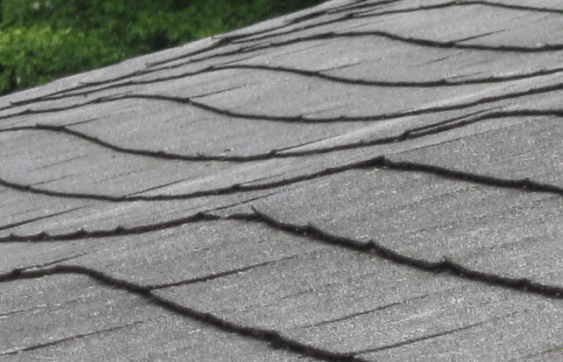
A brand-new roof should be fully even, with flat, straight exteriors that allow debris and water to sprint off with ease. The roof shouldn’t sag, arch, or catch any debris on its surface. Unfortunately, roofs can’t preserve this position of pristine quality for long. A sagging roof is a weighty concern that needs to be addressed as soon as possible. Although in some cases, it’s no need for instant alarm
As your roof ages, there are many factors that can pitch in to a sagging roof and some of them are;
Your roof is frequently exposed to wind, rain, and snow. Over time, these rudiments can bring a great deal of water damage to your roof, particularly if your roof is inadequately maintained or was inaptly installed. Since roofs deal with a lot of runoffs throughout the year, you must pay concentration to how rain and snowmelt drain off your roof. defects in your roof surface, inadequately designed gutters, and damaged shingles can all lead to water damage and ultimately to a sagging roof.
still, keep in mind that this can tack a lot of loads to your roof, if you live in an area that gets snow or ice in the colder months. While your roof should be designed to repel a certain quantum of weight, too much weight can lead to a drooping roof, a roof collapse, and other weighty structural damage to your habitat.
It is possible to face aftermaths of a sagging roof much sooner than anticipated, if your roof has been constructed using bad warped accoutrements by an unskilled roofer. However, your roof can end up sagging afterward on in its own due to the weight the roof itself pushes down, if the roof joining or rafters are inadequately installed and constructed.
Using undersized accoutrements is another common cause of the problem. Something as simple as employing 2x4 rafters rather than 2x6 rafters can make it to sag. Also, the walls are susceptible to spreading which will bring about sagging as well, if there's no internal bracing or inadequate bracing.
Indeed, if your roof was installed by the most professed of roofers using the best accoutrements on the request, it'll not last perpetually. Even the highest quality of accoutrements and installation jobs will decay in time. Roofs can hold up between 15 and 70 years depending on the accoutrements used, the design of the roof, and the girding climate, so if you look at your roof and notice, it is sagging then check how old your roof is. However, getting a roof replacement instead of a sagging roof repair may be the most effective way to resolve the issue, if it’s over 30 years old.
You first want to identify the extent of the damage so you know if a repair or substitute is more applicable. While there are diverse ways to jack up a sagging roof, you want to be sure the job is done precisely to keep you, your family, and your habitat safe. It’s always recommended that you meet a professional roofing company to handle the examination process for your sagging roof so you don’t hurt yourself, impair your roof more, or misdiagnose a grave roofing issue.
Document any damages to help judge the bound of the damage. Some problems behind a sagging roof can be settled by jacking up loose rafters, adjoining struts and supports, and substituting shingles, but some problems will want help from a professional roofer. Don’t attempt to fix your sagging roof yourself if you aren’t a professed professional. Call an expert roofing company to get a proper examination.
A small quantum of roof sag is not necessarily a cause for dread, you’re probably not on the verge of a crisis like a roof collapse. Still, you should no way ignore a structural issue when noticed, attend to it as soon as possible. When you neglect to set a sagging roof swiftly, you can put the rest of your home’s structure at threat of worsening which will lead to more pricey roof repairs.
Reach out to us at Kings Queens Roofing 68-38 Main Street #2 Flushing NY, 11367 (718) 489-4009 https://www.kingsqueensroofing.com for roof-related advice.